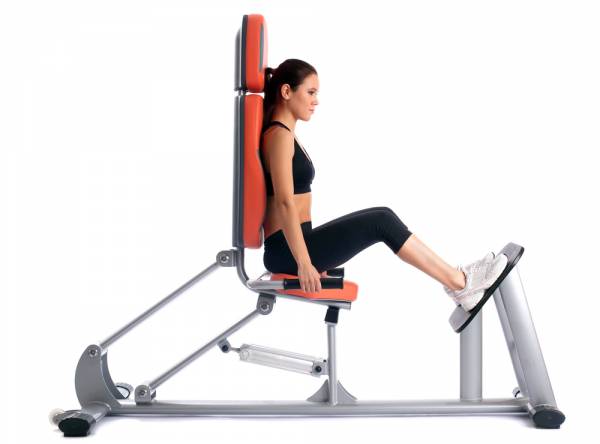Many research studies over the years have compared exercise intensity (effort) and duration (length of effort), independent of the calories required to fuel them. From this we have learned that various outcomes are possible depending upon our effort expended over the time of our activity. Generally:
- Lower-intensity of effort = the higher potential time of the activity
- Higher-intensity of effort = the lower potential time of the activity
- Greater time period of exercise = lower intensity of effort possible
- Lesser time period of exercise = higher intensity of effort possible
Thus, many exercise regimens exist containing various prescriptions based on the variables of intensity, duration, volume, and recovery. Think running, boot camps, circuit training, or exercise device (i.e. rower) efforts.
Studying Hydraulic Resistance
One type of device that can be used in training is a hydraulic resistance device (HRD). It involves only concentric motion – meaning, resistance pushing out, but no resistance on the return (eccentric) stroke. A 2015 study published in the Journal of Strength & Conditioning Research compared the energy used in single sessions that combined aerobic and resistance training using concentric motion similar to that of a HRD.
“If you train with high intensity on an HRD, you can burn more calories compared to conventional resistance.”
The subjects in the study were recreationally active males with an average age, height, and weight of 25, 181.6 cm/5′-11.5″, and 86.6 kg/190.5 lbs. The factors compared were caloric expenditure, energy substrate used (i.e., carbs, fat, or protein), heart rate (HR), and rate of perceived exertion (RPE).
The subjects performed 30 intervals using a :20 all-out effort followed by a :40 rest period, totaling 30 minutes of activity. Specifically each test was performed with these:
- Resistance training using 75% of a 1RM
- Endurance cycling at 70% maximum heart rate
- Endurance treadmill running at 70% maximum heart rate
- High-intensity interval training (HIIT) on a HRD
The researchers hypothesized that caloric expenditure, heart rate, and RPE would increase when using the HRD when compared to conventional running, biking, and resistance training for a similar amount of time due to the increased intensity.
The Study Results
Calorie usage per minute:
- HRD – 12.62 ± 2.36
- Resistance training – 8.83 ± 1.55
- Treadmill – 9.48 ± 1.30
- Cycling – 9.23 ± 1.25
Average heart rate in beats per minute:
- HRD – 156 ± 9
- Resistance training – 138 ± 16
- Treadmill – 137 ± 5
- Cycling – 138 ± 6
Average RPE (6-20 on the Borg scale):
- Resistance training – 13 ± 2
- Treadmill – 10 ± 2
- Cycling – 11 ± 1

What We Can Learn From This Study
- If you train with high intensity on an HRD, you can burn more calories compared to conventional resistance, treadmill running, and cycling performed at similar times and intensities.
- Using HRDs can be beneficial for gaining the benefits of both resistance and cardiovascular training when your training time is limited.
- Resistance training could be used in place of traditional aerobic training for the purpose of maintaining body composition due to similar caloric expenditures.
- The concentric-only nature of HRDs may allow for faster recovery due to less muscle damage.
“We have learned that various outcomes are possible depending upon our effort expended over the time of our activity.”
For many athletes, in-season training becomes difficult due to practice and competition commitments. For others of us, we may simply have busy periods of our lives. Given that and these study results, training on an HRD may be more time efficient for addressing muscle mass maintenance and concomitant endurance training.
Check out these related articles:
- What Is the Best Way to Burn Calories in 30 Minutes?
- Why You Can’t Compare Resistance and Repetition Efforts
- Science Says – Sprints Burn 200 Calories for 2.5 Minutes of Work
- What’s New On Breaking Muscle Today
References:
1. Paul H. Falcone, et al. “Caloric Expenditure of Aerobic, Resistance, or Combined High-Intensity Interval Training Using a Hydraulic Resistance System in Healthy Men ,” Journal of Strength & Conditioning Research, March 2015, 29: 3, pp 779–785.
Photos courtesy of Shutterstock.






